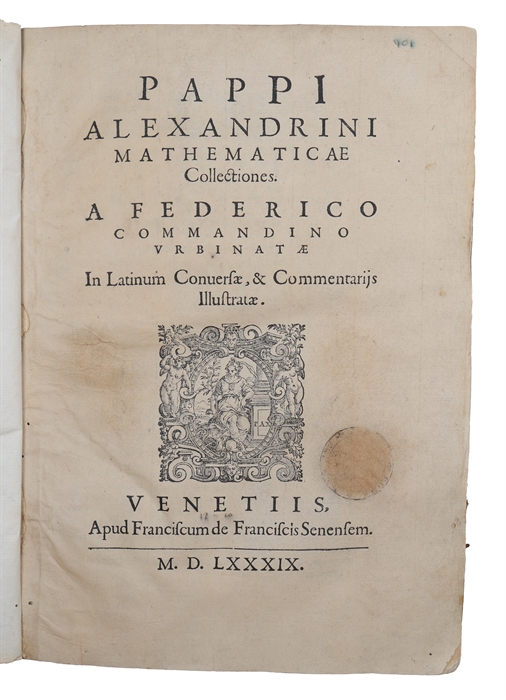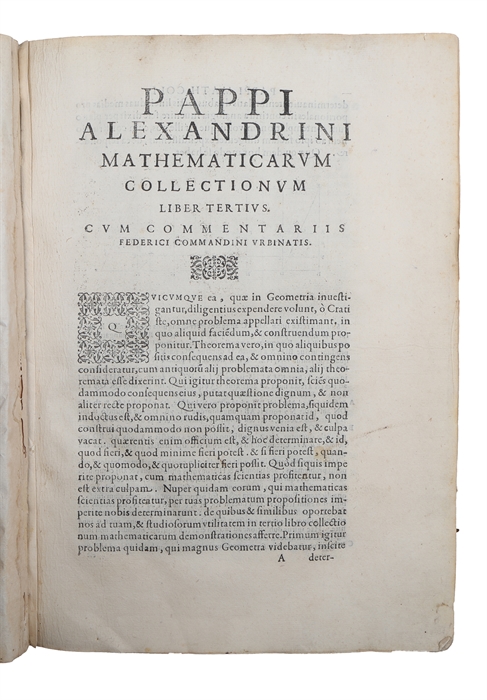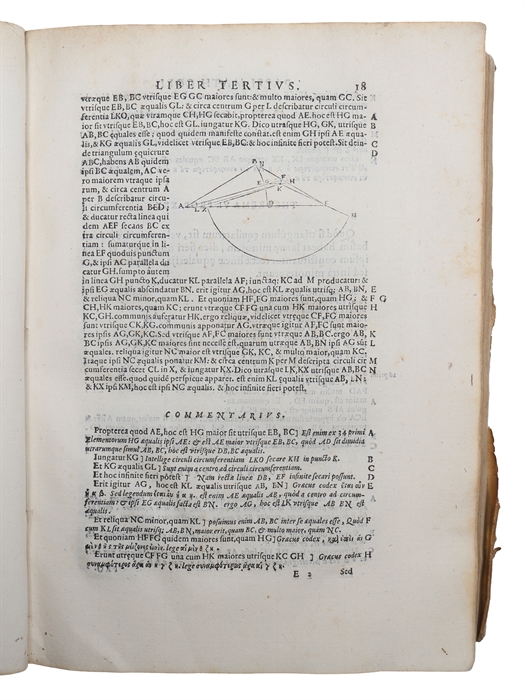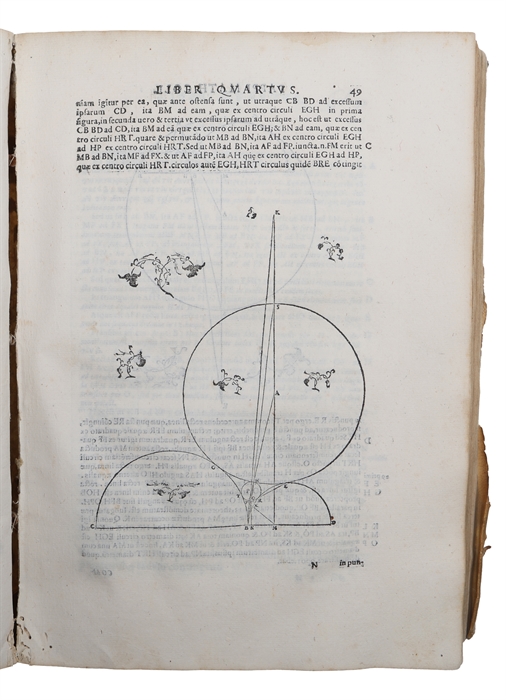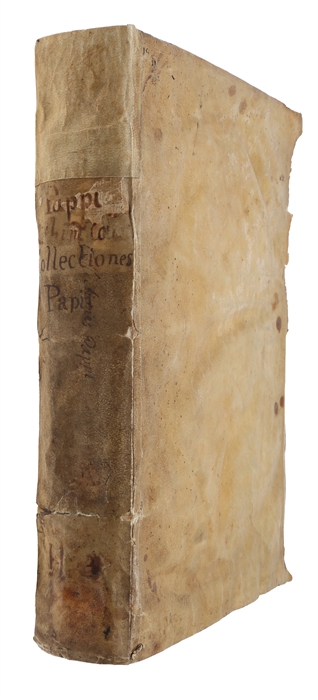THE CULMINATION OF GREEK MATHEMATICS
PAPPUS (PAPPOS) of ALEXANDRIA.
Pappi Alexandrini Mathematicae Collectione. A Federico Commandino Urbinatae In Latinum Conversae, & Commentarijs Illustratae.
Colophon: Pisauri (Pesaro), Hieronymum Concordiam, 1588.
(Having the reprinted title-page: Venetiis, Franciscum de Franciscis Senemsem, 1589). Folio. Cont. limp vellum. Repairs to upper part of back and small nicks to back repaired. Edges of covers with tiny loss of vellum. Covers slightly soiled. Calligraphed title on back. Title-page with and old, partly erased stamp. Woodcut printer's device on title. Ff (3), 334 (332) (= 664 pp). Numerous woodcut diagrams and illustrations in the text. Printed on good paper, Ff 2-3 with an old repair to inner margin (no loss). F 2 browned, but otherwise remarkably clean with only a few brownspots. A few small worm-tracts to some margins.
First edition of a work which constitutes the culmination of Greek Mathematics. This copy has the fresh title, but is the 1588-printing. - "Pappos was the greatest mathematician of the final period of ancient science, and no one emulated him in Byzantine times. He was the last mathematical giant of antiquity." (George Sarton, Ancient Science and Modern Civilization. p.82).
"Pappus of Alexandria in ab. 320 composed a work with the title Collection (Synagoge) which is important for several reasons. In the first place it provides a most valuable historical record of parts of Greek Mathematics that otherwise would be unknown to us. For instance it is in Book V of the Collection that we learn of Archimedes' discovery of the thirteen semiregular polyhedra or "Archimedian solids". Then, too, the Collection includes alternative proofs and supplementary lemmas for propositions in Euclid, Archimedes, Appolonius and Ptolemy. Finally, the treatise includes new discoveries, and generalizations not found in any earlier work. The Collection, Pappus' most important treatise, contained eight Books, but the first Book and the first part of the second Book are now lost" (Boyer, A History of Mathematics p. 205).
"Each book (8) is preceded by general reflexions which give to that group of problems its philosophical and historical setting. The prefaces are of deep interest to historians of mathematics and, therefore, it is a great pity that three of them are lost [...] Book VII is far the longest book of the Collection [...] [and here], we find in it the famous Pappo's problem: "given several straight lines in a plane, to find the locus point, such that when straight lines are drawn from it to the given lines at a given angle, the products of certain of the segments shall be in a given ratio to the product of the remaining ones". This problem is important in itself, but even so because it exercized Descartes' mind and caused him to invent the method of coordinates explained in his Geométrie (1637). Think of a seed lying asleep for more than thirteen centuries and then helping to produce that magnificent flowering, analytical geometry [...] The final Book VIII is mechanical and is largely derived from Heron of Alexandria. Following Heron, Pappos distinguished various parts of theoretical mechanics (geometry, arithmetic, astronomy and physics). The Book is considered the climax of Greek mechanics and helps us to realize the great variety of problems to which the Hellenistic mechanicians addressed themselves. If Book VIII is the climax of Greek mechanics, we may say as well that the whole collection is a treasury and to some extent the culmination of Greek mathematics. [...] The ideas collected or invented by Pappos did not stimulate Western mathematicians until very late, but when they finally did, they caused the birth of modern mathematics- analytical geometry, projective geometry, centrobaric method. That birth or rebirth from Pappos' ashes, occurred within four years (1637-40). This was modern geometry connected immediately with the ancient one as if nothing had happened between." (Georg Sarton op.cit.). - It is from Pappus we have the famous words of Archimedes: "Give me a place to stand, and I will move the earth" (Se PMM No 72). - "Without pretending to great originality, the whole work shows, on the part of the author, a thorough grasp of all the subjects treated, independent of judgement, mastery of technique; the style is terse and clear; in short, Pappus stands out as an accomplished and versatile mathematician, a worthy representative of the classical Greek geometry." (Heath, A History of Greek mathematics Vol. II: p.358). - Adams P 224 (The sheets of the Pisauris edition with a fresh title).
Order-nr.: 30603

